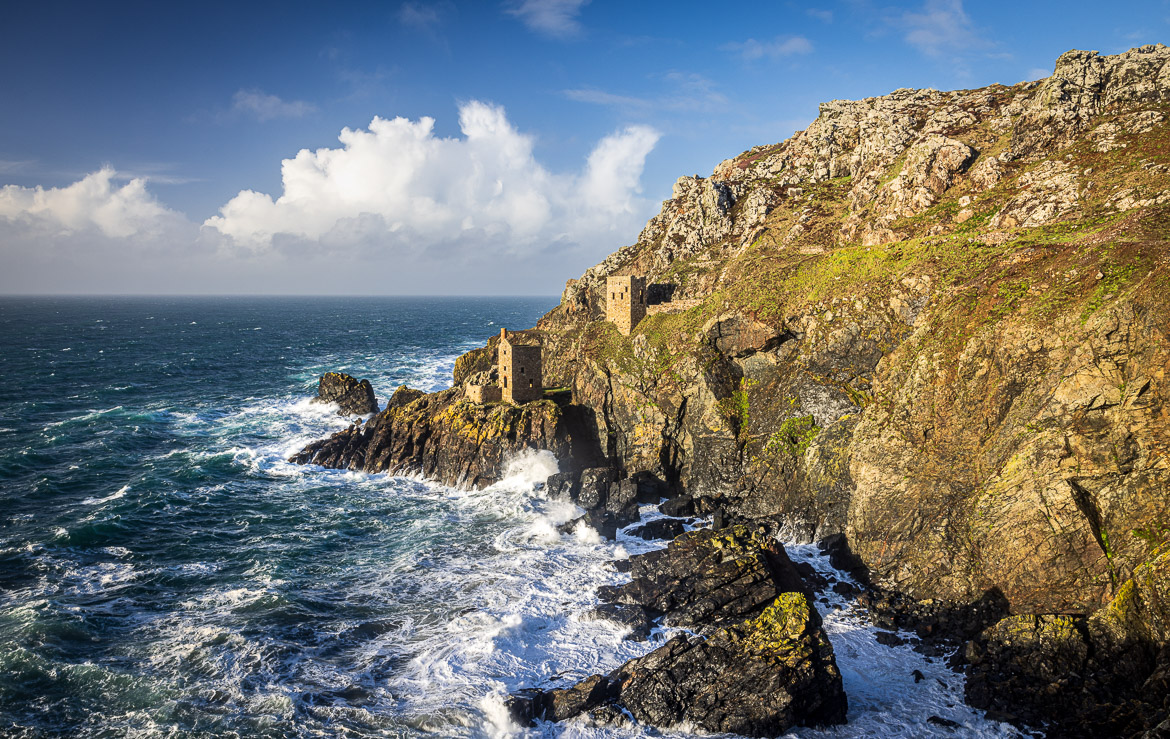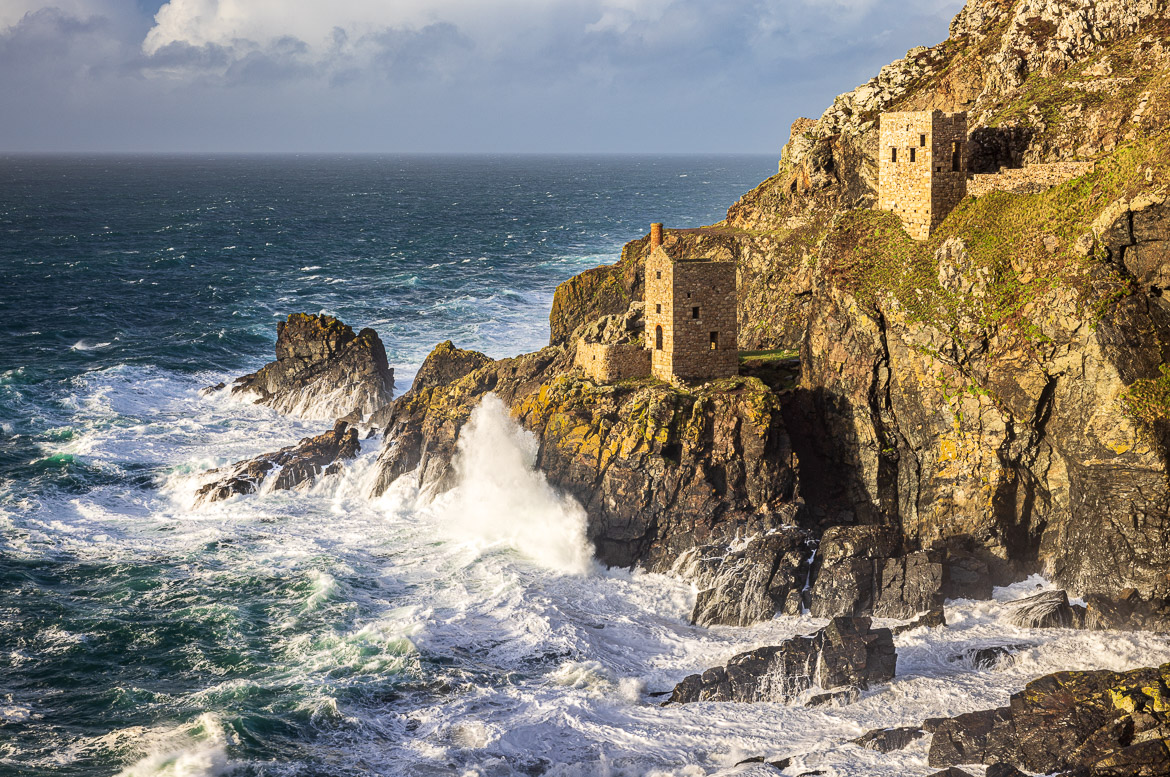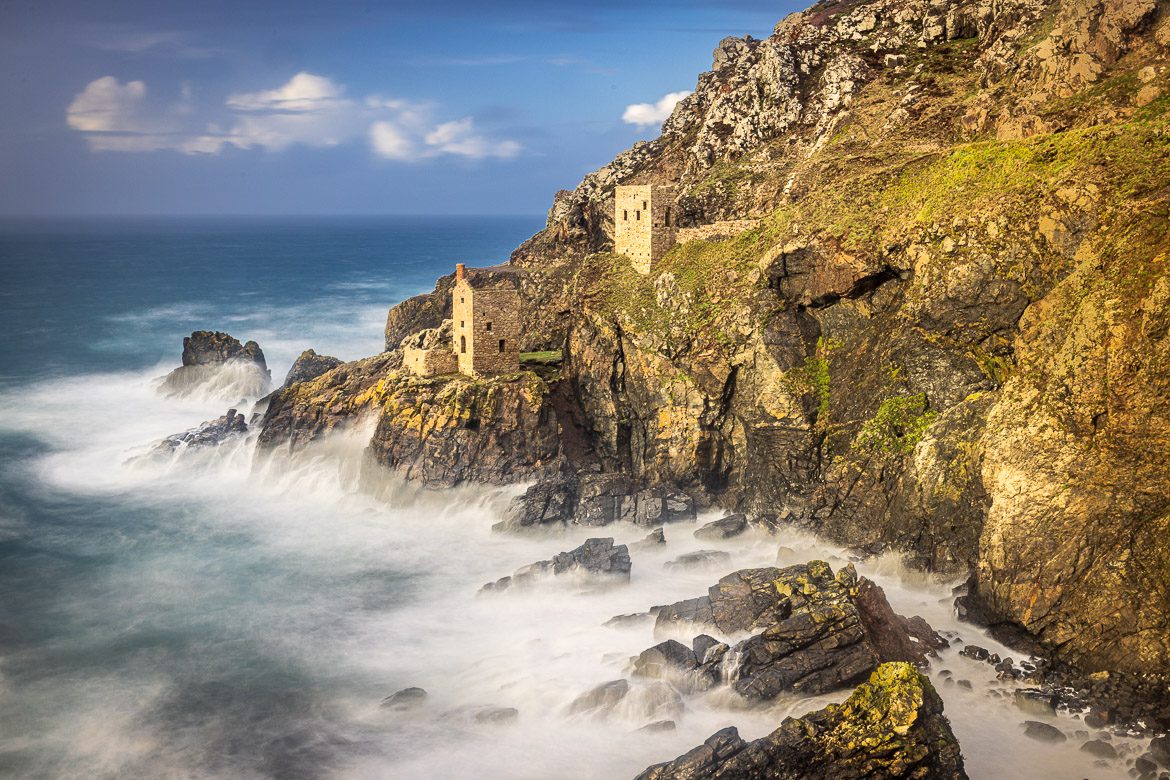
Just a couple of miles north of Land’s End on the same peninsula are the Botallack Mines. Botallack was a submarine tin and copper mine with tunnels extending under the sea. Early records show that mining activity date from at least the 1500s but some archeological evidence indicate that mining may have taken place here already in Roman or Bronze Age time.
The main activities in the mine are from the 19th century. The deepest mine shaft went as much as 400m out under the sea and the deepest shaft is 500m beneath sea level. The main buildings to survive are the Lower Engine House, built in the 1830s and the Uper Engine House around 1860. Both are remnants of the Crown Mine. They can clearly be seen in all the photos I have posted.

The Lower Engine House was used to pump water from the mine shafts. It stands nearly 20 metres above sea level. It is now inaccessible due to the danger of subsidence and even when it was built, the building stones had to be lowered down the cliffs with block and tackle.
The Upper Engine House was used as a winding house for one of the main shafts. It stands about 15 metres higher up than the lower House and was used to haul men and material up the diagonal shaft. The shaft was closed in 1874. Both Engine Houses were driven by steam engines.
Although some activity continued into the 20th C the mining operation was hit by lower prices of tin due to competition from Malaysia, Sumatra and in the 1870s from Australia and most mining activities were closed in the late 19th century.
Around 500 men, women and children would have worked here in the various shafts at any one time during the heydays of the mining operations.

